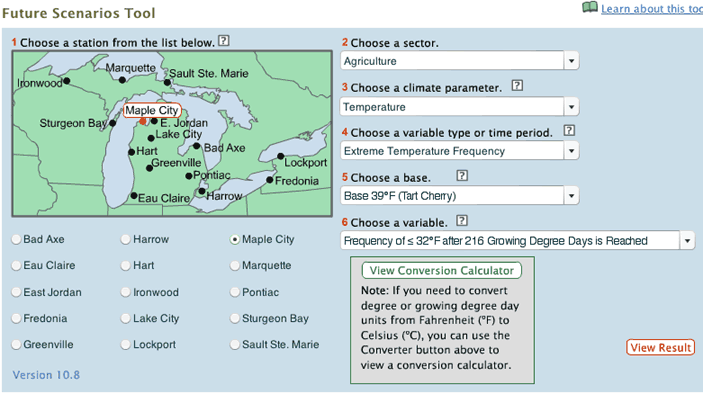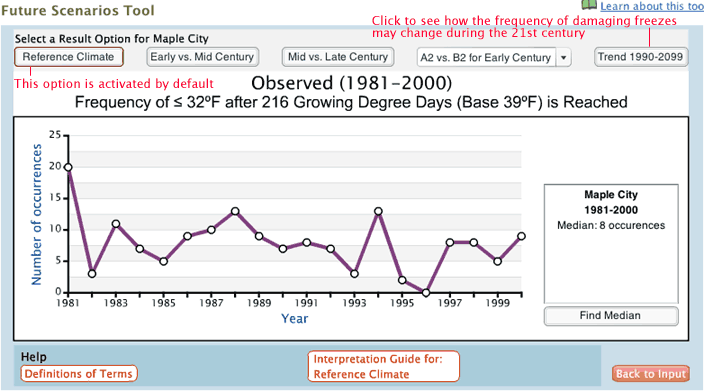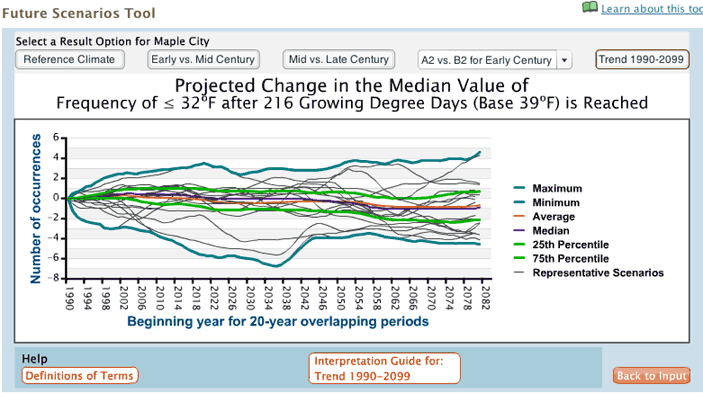Future Scenarios Tool User Case 3

Photo by Fotognome, Flickr
How might the risk of damaging springtime cold temperatures change in the future?
A serious risk to the production of tart cherries and other fruits in Michigan is the occurrence of damaging cold temperatures after warm spells in early spring that bring buds out of dormancy. One estimate of damaging springtime cold temperatures is the occurrence of freezing temperature after critical growth stages are reached.
In the Future Scenarios Tool, a critical growth stage for tart cherries is defined as the time when 216 Growing Degree Days (Base 39°F) is reached, which corresponds to early bud development. To see how the frequency of damaging spring freezes may change in the future, first select a station (Maple City in this example), and then choose “Agriculture”, “Temperature”, “Extreme Temperature Frequency”, “Base 39°F (Tart Cherry)”, and “Frequency of <=32°F after 216 Growing Degree Days is Reached”. (See Screenshot 1 below)
Screenshot 1

Now click on “View Result”. The graph that is displayed (Screenshot 2) gives the number of days with freezing temperatures after 216 GDDs is reached. Please note, though, that only one day of freezing temperatures may be sufficient to cause damage. For this reason, the future scenario statistics are expressed as the frequency of years (out of 20) with at least one day with minimum temperatures below freezing after 216 GDDs has been reached. To see how the frequency of damaging freezes may change during the 21st century, click on the “Trends 1990-2099” button.
Screenshot 2

Considerable uncertainty regarding changes in the frequency of damaging springtime cold temperatures is evident from the trend plot (Screenshot 3). Approximately half of the scenarios suggest that the frequency of damaging springtime cold temperatures will increase, whereas the other half of the scenarios suggests that the frequency will decrease. Improvements in climate modeling and scenario development are required in order to better understand how this aspect of the local climate may change in the future.
Screenshot 3
